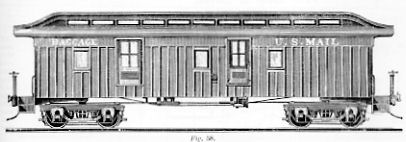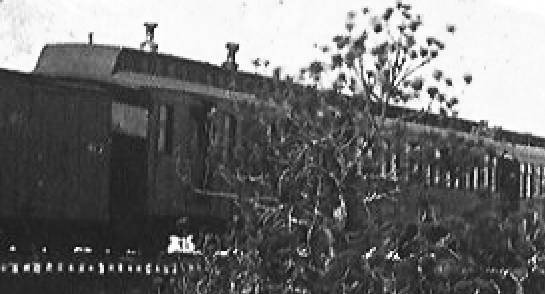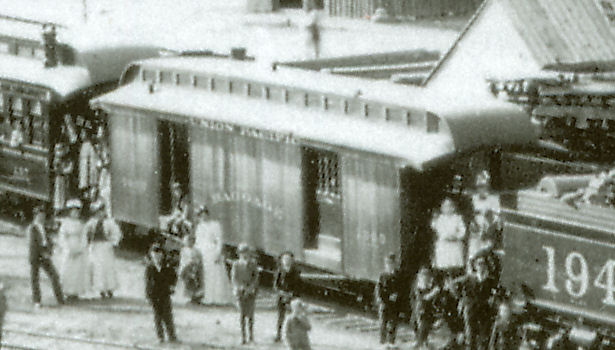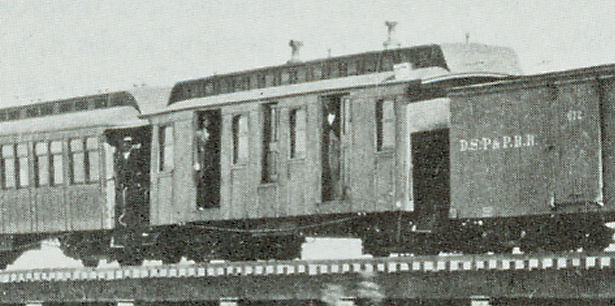Baggage Cars #40, #41 and #45
|
 |
Baggage cars #40, #41 and #45 had end platforms at both ends and the platform roofs were of the broken duckbill profile with the flat eave line that goes with it. They appear not to have had board-and-batten siding per se, but some sort of decorative batten or strip that came down from the corner of each window, and of the center door. They also had much more prominent smokejacks that most cars.
 |
|
(2) Baggage #40 or #41 on the Arkansas River bridge near Buena Vista, early 1880s. Charles Weitfle photo at Kindig-40, Ferrell/SoPk-50 and online at The Narrow Gauge Circle, Ted Kierscey Collection Image 00237. |
HISTORY
Baggage cars #40 and #41 were built by the South Park’s Denver shops in 1879, probably from parts manufactured by one of the eastern car builders. During 1879 the end-of-track had advanced steadily. On January 17, end-of-track was at Halls Valley—soon to be renamed Webster—70 miles from Denver. By the end of the year end-of-track had crossed the South Park and was 3.8 miles short of the summit of Trout Creek Pass, 166 miles from Denver, on its way to Gunnison. And business had grown just as steadily as had trackage.
At the beginning of the year the South Park had just five passenger cars: three coaches and two combination coach-baggage cars. During the year, as end-of-track advanced, the Denver shops built an additional coach—coach #6—the two baggage cars—#40 and #41—and finally, in September, a full-fledged baggage-mail-express car, #42.
Just one month later an agreement was signed that would allow the South Park to access the booming town of Leadville from Buena Vista using the tracks the Denver & Rio Grande would soon be building from there. The South Park would soon be needing a lot of passenger equipment!
In the next ten months the South Park added 22 more passenger cars to its fleet, two of which were baggage-mail-express cars #43 and #44, and another of which was baggage car #45, built by the Denver shops according to the same plan, or using parts from the same builder, as baggage cars #40 and #41.
In 1885, the Union Pacific renumbered #40, #41 and #45 to #1000, #1001 and #1002, numbers they retained until 1898 under the Denver, Leadville & Gunnison. Sometime during this period the cars were rebuilt, having their side windows sheathed over, and their roofs redone with platform roofs of the bullnose profile.
 |
|
(3) Denver, Leadville & Gunnison baggage car #1000 at Morrison 14 June 1892. The sides were probably not as streaky as they look. The sun is directly overhead -- see the shadow of the letterboard, which is probably not over an inch thick. Photo at Ferrell/SoPk-269(m) and Poor-149(u)(ME). Photo courtesy of Littleton Historical Society at Wagner-328. |
When taken over by the Colorado & Southern in 1899, DL&G #1000, #1001 and #1002 became C&S #102, #103 and #104.
Baggage car #103 was destroyed at South Park Junction in June 1902, after being wrecked in a head-on collision between the Fish Train and westbound train #71.
When the C&S renumbered in 1906, #102 became baggage car #1. It was rebuilt in 1915 and the end platforms removed. It was dismantled in May 1939.
